Order flow analysis gives you a clear look at market momentum by watching how many buy and sell orders come in, and where they land. By following this live stream of orders, traders can spot quick changes in supply and demand that headlines alone may hide.
Whether you trade forex, stocks, indices, commodities, or crypto on our CFD platform, reading the flow helps you guess the next price step more reliably.
The Power of Order Flow Insights
Instead of just charts of past prices, order-flow analysis tracks every ticket printed, showing who is really pushing the market up or down. It drills into bid and ask volumes still sitting in the order book, letting you spot big buyers or sellers before they change the game.
Knowing this allows you to identify high–probability setups, lean a lot less on slow-moving signals, and use our mainsheet tools to trade pairs like EUR/USD, stocks like Microsoft, or Ethereum with fresh confidence.
Four-Pillar Approach to Order Flow Mastery
To master order flow, blend live market data with your usual confirmation tools, then stick to trades until signal-or risk-says stop. You start by reading the volume map, adding a light indicator for micro-trend reads, watching news for mood shifts, and finally using sharp risk limits so one move never wipes you out.
Pillar 1: Reading Market Depth
Market depth shows upcoming buy and sell orders waiting to be filled, sort of like a line at the coffee shop.
On our platform, pull up the order book for USD/JPY and look for big blocks—giant buy orders sitting at a support can hint at a reversal, while lots of sell orders stacked near resistance may point to a breakdown. Stick to 5-minute or 15-minute charts for quick moves, and circle clusters of orders that show where traders care.
Pillar 2: Tracking Volume Footprints
Volume footprint charts break down how much was traded at each price, letting you see where the big players stepped in. Picture a heavy pile of green bars at a stock’s support level-Tesla often serves up drama here, which tells you demand is alive and a bounce is possible.
Grab footprint tools during wild crypto runs, match your entry to the louder side of the order flow, and give yourself a stronger shot at riding the trend.
Pillar 3: Confirming with Delta Analysis
Cumulative delta tracks the gap between aggressive buy orders and aggressive sell orders. When delta climbs as a breakout happens, think of Bitcoin pushing through tough resistance.
On the flip side, a falling delta at a high point hints at fresh selling pressure. Mix that delta read with obvious price clues-a big breakout candle, for example-to strengthen your trade plan. Stay grounded by letting the delta trend matter more than a cluttered chart full of fancy indicators.
Pillar 4: Timing Entries and Exits
Good order-flow trading lives or dies by timing. Move in the moment, buy orders swamp the book at a clean support line, and a bullish engulfing candle flashes.
Place protective stops under nearby clusters, risking just 1 to 2 percent of the account-roughly £20 to £40 if you start with £2,000-then aim for double that reward. Drill the routine in a demo account, using our platform’s quick-click tools until entries feel automatic.
Master Order Flow Analysis for Different Markets
📝Note:
Order-flow reads shift from stocks to crypto to futures, so bend your strategy to each market if you want to catch the best setups.
Forex Order Flow
Forex trades rely on deep liquidity, making order flow a smart lens to use. For big pairs such as GBP/USD, keep an eye on the order book from 8 a.m. to noon EST, when the market is busiest. Jump in only when you see a clear imbalance—say, heavy buy orders resting at a support line—and the delta backs that up.
You can sharpen your edge by:
- Trading during session overlaps, such as London-New York, for the clearest flow data.
- Setting tight stops, around 10 pips, to shield against the usual spikes.
- Steering clear of Sunday night and late Asian hours when the book can thin and signals go haywire.
Stock and Index Order Flow
Stocks and wider indexes react fast to earnings beats or big-money moves, so order flow helps spot possible reversals. Picture Amazon—if huge buy volume gathers at a round number, the chart is primed for a bounce. With a basket like the NASDAQ, lean on CFDs to catch flow gaps right at the market open. Footprint charts also show if institutions are really behind the push.
Crypto and Commodity Order Flow
Coins such as Solana, along with raw goods like gold, can flip on a headline, so order flow must be watched closely. When regulators speak on Ethereum, tap the order book for a large bucket, then wait for the breakout to confirm your entry.
After an OPEC supply report, watch oil: heavy buying around a zone shows bulls are blocking selling.
Check-list tactics include:
- Giving your stops more room, perhaps double normal size, so fleeting spikes don’t knock you out.
- Matching each setup with delta prints and volume streaks to keep dull noise from acting like real pressure.
Targeting Quick Exits at High-Volume Resistance Levels
Traders hoping for fast, small wins often look at busy resistance zones. These areas usually attract heaps of buy and sell orders, creating points where price can quickly bounce or break through.
📝Note:
By reading the order flow near these levels, you can decide whether to enter, tighten a stop, or exit with little delay.
Critical Order Flow Signals
The signals listed here help make sense of the moving market.
| Signal | Description | Why It Matters |
| Order Book Imbalance | Large buy/sell orders at a price level | Signals a potential price reversal or breakout |
| High Volume Footprint | Intense trading volume at specific prices | Indicates strong support or resistance |
| Positive/Negative Delta | Net buy or sell order aggression | Confirms momentum direction for trades |
| Absorption by Limit Orders | Large limit orders absorb market orders | Suggests price stabilization or reversal |
Risk Management for Order Flow Trading
Even the best signals can fail, so solid risk rules keep your account alive:
- Limit risk to 1-2%, about £20-£40 on a £2,000 account.
- Place stops just beyond major order clusters to avoid being whipsawed.
- Review a trade journal weekly to see how well each signal worked.
📝Note:
Following these habits keeps discipline high and losses low.
Advanced Order Flow Techniques
Once comfortable with basics, try delta divergence, where price and delta move in opposite directions. Pair 5-min readings with 1-hr data for multi–timeframe context before taking a trade.
Scan for spoofing—fake orders that vanish milliseconds later—to fine-tune entries, especially in crypto. All these methods need practice, but they can lift hit rates and overall profitability.
Overcoming Order Flow Challenges
False signals and too much data can ruin the rhythm of order-flow trading. To steer clear of traps, wait for a clear confirmation signal, like a sudden volume spike that matches an order imbalance.
Limit your viewing to a few key tools, such as footprint charts, so the screen does not overwhelm you. Being comfortable with your platform lets you act quickly, while a short daily review of market news flags the volatility that can shake up order-flow signals.
Wrapping Up:
Once you master order-flow analysis, real-time trade data becomes your early-warning system, giving you the edge to spot moves and turn them into profit.
Tracking market depth, double–checking each signal, and keeping risk small allows you to trade order flow in the same way in New York, London, or Tokyo.






